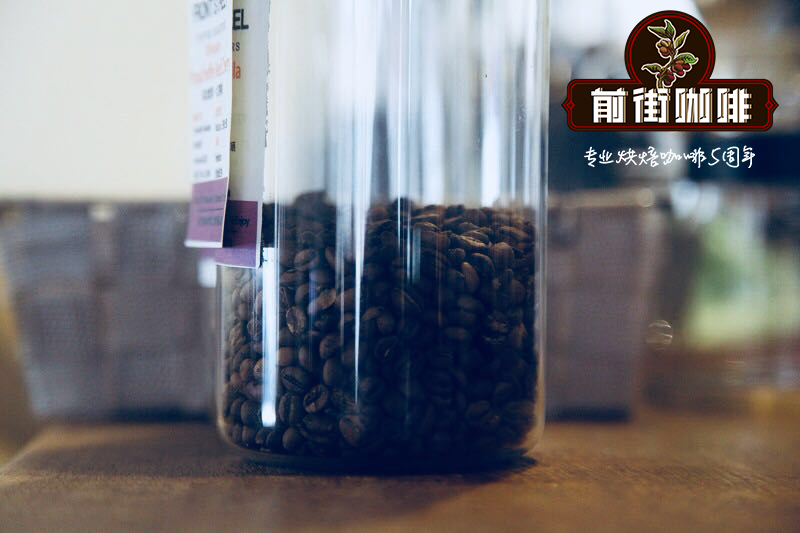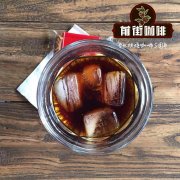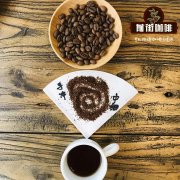How coffee beans are roasted in different countries? How many coffee beans are roasted?

Professional coffee knowledge exchange more coffee bean information please follow the coffee workshop (Wechat official account cafe_style)
When studying the roasting degree of coffee beans, the roasting degree can be judged by sound, color and aroma. Its color from light gray to dark brown, aroma from light and elegant gradually rich; the sound is issued twice burst sound, for example, heat-resistant raw beans, about 7 points began the first explosion, lasting about 2 minutes, its voice is low, indicating the beginning of pyrolysis, starch into caramel, water evaporation, exhaust, around 12 minutes issued a second explosion, the sound is violent and sharp, indicating that the cell fiber is broken, the deeper the baking.
The famous American Fine Coffee Association (SCAA) promotes the determination of the degree of baking by the caramelization analysis value (Agtron number) determined by the red inside. the higher the value, the lower the caramelization, the grayish color, and the lighter the baking; conversely, the lower the value, the higher the caramelization, the brighter the color, and the deeper the baking. The well-known roasting degree of coffee is the American term shallow roasting, medium roasting and deep (heavy) roasting, which can be subdivided into eight stages, and the difference of roasting degree varies with different regions. The depth of coffee roasting has been almost unified all over the world over the past few hundred years. For example, some American names for depth are called Cinnamon Roast, and City Roast also has Light Roast, Medium Ligh, and Medium Dark commonly used in Europe and the United States, while Agtron Number, jointly launched by Agtron and SCAA boutique coffee in the United States, is to standardize the roasting of beans to the greatest extent.
Before the third wave of boutique coffee, that is, in the 1970s and 1990s, there was no boutique coffee, that is, commercial coffee beans were mainly commercial coffee beans. If commercial coffee beans were roasted lightly or moderately, it was easy to drink the defective flavor and unclean taste of the coffee, or some aged beans were easy to drink woody flavor because of water loss, if roasted to the second explosion. These bad flavors are hard to drink, which is why the third wave of light roasting is popular. With the improvement of coffee cultivation and coffee post-processing technology, we can get a cup of coffee that is cleaner, sweeter and more regional. Shallow roasting can taste the native flavor of coffee, such as a bean with the scent of citrus flowers, then it must be the beans from Ethiopia. If they are roasted to the second explosion density, these good flavors will be lost.
Baking methods in different countries
Ethiopia used to use coffee as food. After chopping the fruit, knead it into balls with oil. This practice spread to Arabia, where coffee seeds were chopped and boiled and spiced, giving birth to cafe ala sultana, the earliest method of drinking coffee in history.
The roasting degree of espresso is lighter than that of Turkish coffee. after it was introduced into France, it was called French coffee, and the roasting degree was a little shallower. After that, it was introduced to other countries, so there were German coffee, American coffee and so on, and the roasting degree became more and more shallow. Drinking coffee is of religious significance in Arabia and Turkey. As the roasting degree of coffee becomes shallower and shallower, it is gradually called a popular drink like tea.
Vienna prefers deep baking. Even as the name suggests, the French prefer French baking, while Italians often use Italian baking. However, in recent years, Italian baking (the most commonly used deep roasting in Brazil and Italy) has been widely used in Europe and the United States, and the coffee made by steam pressurizer is still popular.
Guatemala Antigua coffee beans seem to retain their sour and fruity flavor when they are deeply roasted, which is difficult for other coffees.
Sumatran coffee beans are usually full-grained, but are below medium acidity, lose acidity when roasted deeper, and easily turn into sugar paste.
Any kind of coffee can be roasted lightly or deeply, which is technically true, but if you want to give full play to the best flavor of coffee, you have to choose the right baking degree according to the type and character of curry beans. Therefore, from light roasting to Italian roasting, each roasting degree should be experienced once for each kind of coffee beans, and confirmed by their own mouth and nose, write down the taste of each kind of coffee beans at each baking stage, and find out the best time point to highlight the characteristics of the beans.
Important Notice :
前街咖啡 FrontStreet Coffee has moved to new addredd:
FrontStreet Coffee Address: 315,Donghua East Road,GuangZhou
Tel:020 38364473
- Prev

What is coffee honey treatment? What other treatment methods are included in honey treatment?
Professional coffee knowledge exchange more coffee bean information please follow the coffee workshop (Wechat official account cafe_style) We know that raw coffee bean treatment methods can be roughly divided into three types. The distinction between each method is based on the fact that several layers of matter are removed from the fruit before the coffee is dried. The following is a list of the three major processing methods: 1. Natural sun treatment: retain all substances 2. Honey place
- Next

The world's most expensive coffee beans are among the reasons why these beans are expensive.
Professional coffee knowledge exchange more coffee bean information Please follow the coffee workshop (Wechat official account cafe_style) Coffee is grown and produced in more than 70 countries around the world, coffee drinkers are spread all over the world, and the scale of the coffee-related industry chain is incalculable. Coffee plays different roles in different countries and different historical stages. Some people regard it as a time of worship.
Related
- Beginners will see the "Coffee pull flower" guide!
- What is the difference between ice blog purified milk and ordinary milk coffee?
- Why is the Philippines the largest producer of crops in Liberia?
- For coffee extraction, should the fine powder be retained?
- How does extracted espresso fill pressed powder? How much strength does it take to press the powder?
- How to make jasmine cold extract coffee? Is the jasmine + latte good?
- Will this little toy really make the coffee taste better? How does Lily Drip affect coffee extraction?
- Will the action of slapping the filter cup also affect coffee extraction?
- What's the difference between powder-to-water ratio and powder-to-liquid ratio?
- What is the Ethiopian local species? What does it have to do with Heirloom native species?

